

Home
About Us
Allotments
Garden Equipment
Seed Suppliers
Manure Problems
Children's Pages
GLA Blog
Weather Blog
School Veg Patch
Useful Links

Garden Tools
** This website is not a shop and doesn’t sell anything! **
Be aware that any external links may contain cookies and you should refer to the particular website's cookie policy
There is a vast array of garden tools on the market. Here I will share the ones that we wouldn’t be without.
Garden Forks
 We have four tools that we use regularly for digging. The one I use most is the border fork. I find it far easier to use for general digging and the smaller size means that I’m not lifting too much weight.
We have four tools that we use regularly for digging. The one I use most is the border fork. I find it far easier to use for general digging and the smaller size means that I’m not lifting too much weight.
A border fork is also sometime called a ladies’ fork but this really only refers to the smaller size - my husband uses it too.
Fork handles either end in a T or D shape and I much prefer the D-shaped handles. Maybe this is just because it is what I am used to but I just find I can drip this type of handle easier.
Most forks that I have found when browsing the Internet have D-shaped grips.
Our larger garden fork is used when we need to dig deeper such as when trying to dig out really deep rooted docks.
There are now forks and spades available that have longer handles designed to save the taller gardeners from back strain.
Garden Spade
At least one garden spade is essential - we have two. Again we have a general digging spade and a border spade which is smaller.
The same comments as made about garden forks could also be made about choosing a spade or spades.
You can buy lots of different specialised spades but we have never needed any so consider what you will use a spade for before investing in anything with a special function.
Hoe
We have three types of hoe. A Dutch hoe, a claw hoe and a draw hoe.
The Dutch hoe is also called a push hoe as it is operated using a pushing motion. It’s main task is to chop off weeds at ground level - frequent use of a Dutch hoe keeps weeds down.
A draw hoe is also called a pull hoe and is operated using a pulling motion. This is useful for drawing out shallow trenches and also for earthing up potatoes.
The claw hoe is also called a cultivator and is used for breaking up the surface of the soil.
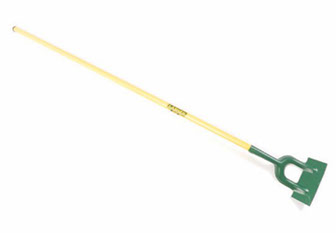
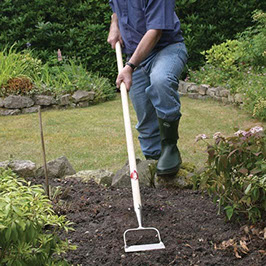
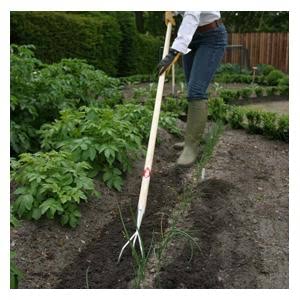
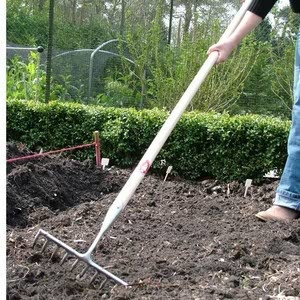
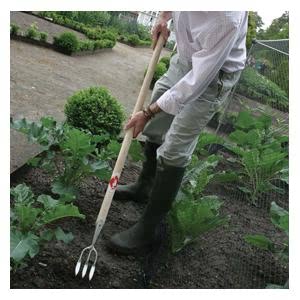 Garden rake
Garden rake
A garden rake is used to create a smooth level surface in which to plant - it is also used to level ground prior to laying a lawn and for raking stones from beds.
Long handled fork
Our final long handled tool is a long handled small headed fork which I use to loosen up soil around plants especially after it has been compacted by heavy rain.
Hand tools
These are tools with shorter handles designed to be used when kneeling or sitting on the ground. Again there is a vast range of tools available and the ones mentioned here are the ones that we not only own but actually find useful.
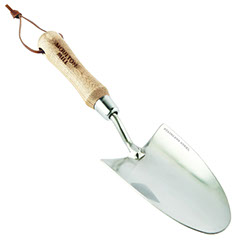
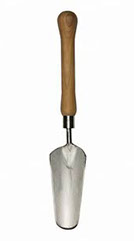 Trowel
Trowel
Every gardener needs at least one trowel. We have several as we often both need to use a trowel at the same time - for instance when there is lots of planting out to do. Rather than dig a deep trench we have been using a trowel to plant our potatoes for several years now - much easier and the crops are as good. I’ve written and article describing how we plant our potatoes here.
As well as the wider headed trowel with have one with a narrow head - it was free with something but it has been useful when the regular trowel is either too wide or doesn’t dig deeply enough for instance when planting bulbs.
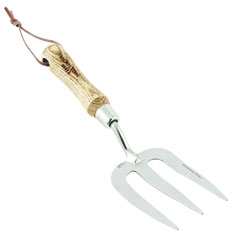
Hand Fork
I use this for the same task as the long handled fork, the difference being that this tool is used when kneeling, sitting or crouching. Sometimes you need to get down and personal with your plants. This tool is used when hand weeding too.

Onion hoe
A onion hoe is great for weeding where weeds are growing very close to plants that you do not want to disturb like onions which I suppose is where it got its name from.
Loppers, shears and secateurs
The final group of tools that we wouldn’t be without are the cutting tools.
We have a pair of secateurs used for pruning - prices vary considerably, a strong pair is a good investment as cheaper models are often not much good at cutting through fairly thick branches.
For those branches that are too thick for ‘normal’ secateurs or to prune at a level too high to reach with their shorter cousins we have a long handled lopper - you can buy telescopic models but ours isn’t.
Then we have a pair of ordinary garden shear for cutting areas of grass inaccessible to the mower when it wouldn’t be worth getting out and firing up the strimmer.
Finally we have a pair of long handled edging shears which give a neater edge to our garden lawn than the strimmer. The long handles mean that you don’t end up with backaches having had to edge from a crouching position.
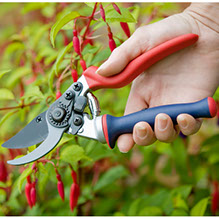
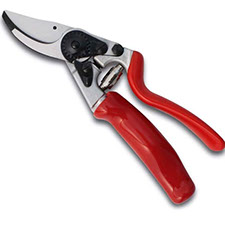
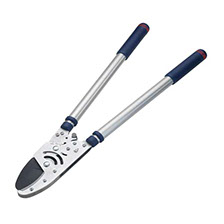
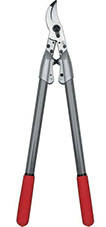
If you need to prune fairly thick branches you will find a pruning saw to be useful.
Also most gardeners wouldn’t be without a gardening knife.

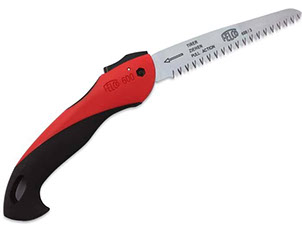
Photos on this page are from Greenfingers and Harrod Horticultural
I’ve gathered together some links from companies offering gardening products for sale. I have no connection to the suppliers and therefore cannot be held responsible for any changes in items available or any issues that may arise when making a purchase.
Some companies give me a small commission on sales that are generated from this website which helps me to maintain this and sister websites but this in no way means that I am recommending purchases from a particular company.
Our Plot at Green Lane Allotments Blog | A Gardener's Weather Diary | School Vegetable Patch Website
© Our Plot on Green Lane Allotments - Please email me if you wish to use any of this site's content